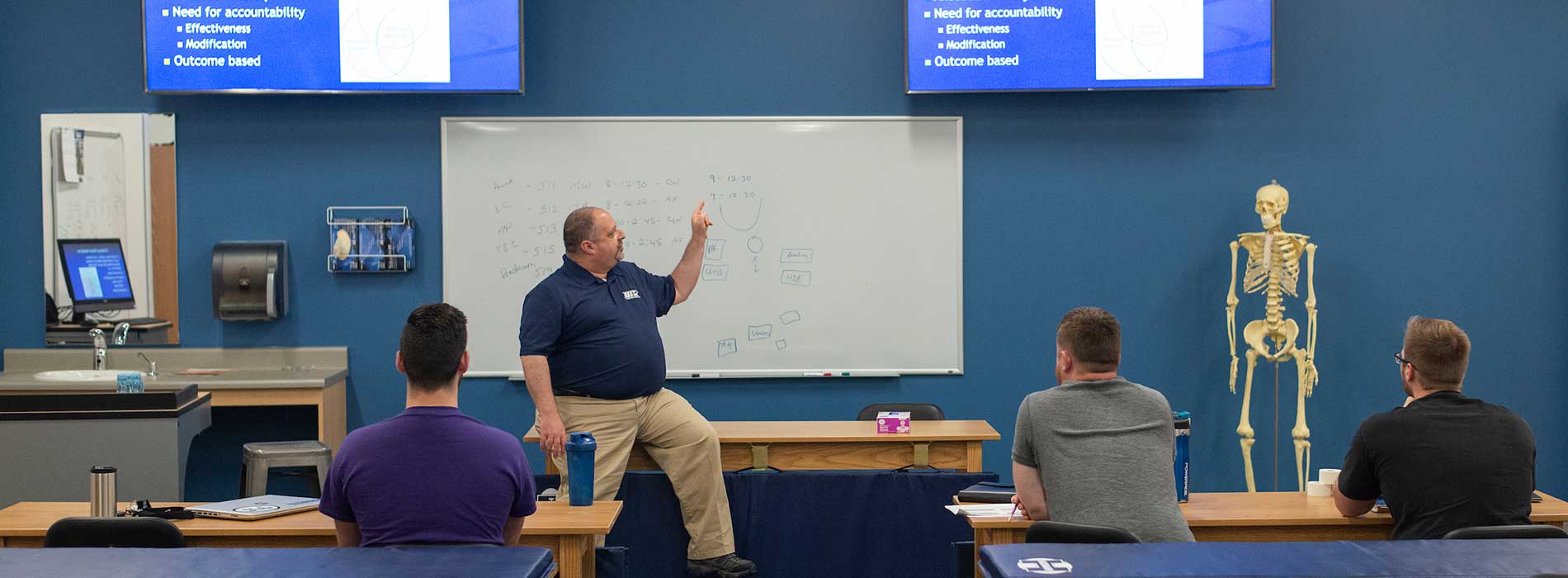What Can I Do With This Degree?
Athletic trainers help prevent and treat injuries. They are often the first health-care professionals on the scene when injuries occur and are trained to recognize, evaluate and assess injuries, and provide immediate care. Athletic trainers educate people on how to reduce the risk of injury, advise them on the proper use of equipment, and recommend exercise and therapy programs. They also apply protective devices such as tape, bandages and braces.
Athletic trainers are needed all over the country to work in:
- Public and private secondary schools, colleges and universities, professional and Olympic sports
- Youth leagues, municipal and independently owned youth sports facilities
- Physician practice, similar to nurses, physician assistants, physical therapists and other professional clinical personnel
- Rural and urban hospitals, hospital emergency rooms, urgent and ambulatory care centers
- Clinics with specialties in sports medicine, cardiac rehab, medical fitness, wellness and physical therapy
- Occupational health departments in commercial settings, which include manufacturing, distribution and offices to assist with ergonomics
- Police and fire departments and academies, municipal departments, branches of the military
- Performing arts including professional and collegiate level dance and music
Emerging Settings for Athletic Trainers (NATA)
Hospital Health Care Administration and Rehabilitation
Athletic trainers are routinely employed in hospitals, clinics and orthopedic, family, pediatric, physiatry and sports medicine office practices. ATs working in these settings improve productivity, patient outcomes and satisfaction. They help move patients more effectively and efficiently through the appointment, evaluation and treatment process. By providing quality services to more patients in the same period of time, physicians are able to increase patient throughput and revenue generation.
The Military
Over the course of the last several years, certified athletic trainers have been increasingly employed by the various Armed Forces to assist in the health and welfare of both active duty soldiers and their dependents. Although each particular branch has its own specific employment policies, most ATs being hired today are either independent contractors or part of the Government Civil Service system.
Occupational Health
In the occupational health setting, athletic trainers develop and manage programs designed to keep employees working at full capacity, improving company productivity and even help reduce health care and insurance costs. The occupational athletic trainer is knowledgeable in the design, implementation and measurement of injury prevention, injury reduction and return to work programs
Performing Arts
Athletic trainers have been working with performing artists for more than 25 years. Performing arts athletic trainers provide specialized injury prevention and rehabilitative care to dancers, musicians and vocalists. Studies show that the on-site medical care that the certified athletic trainer can provide to performers reduces both the frequency and severity of injuries as well as reducing operating and production costs.
Physician Practice
ATs in physician practice improve productivity, patient outcomes and satisfaction. They help move patients more effectively and efficiently through the appointment, evaluation and treatment process. ATs provide value to the practice through skills in triage, taking patient histories, performing evaluations, providing instruction on exercise prescriptions, rehabilitation and general patient education.
Public Safety
ATs working with public safety officials – police, fire department or academies – provide injury prevention, treatment, rehabilitation and reconditioning.
